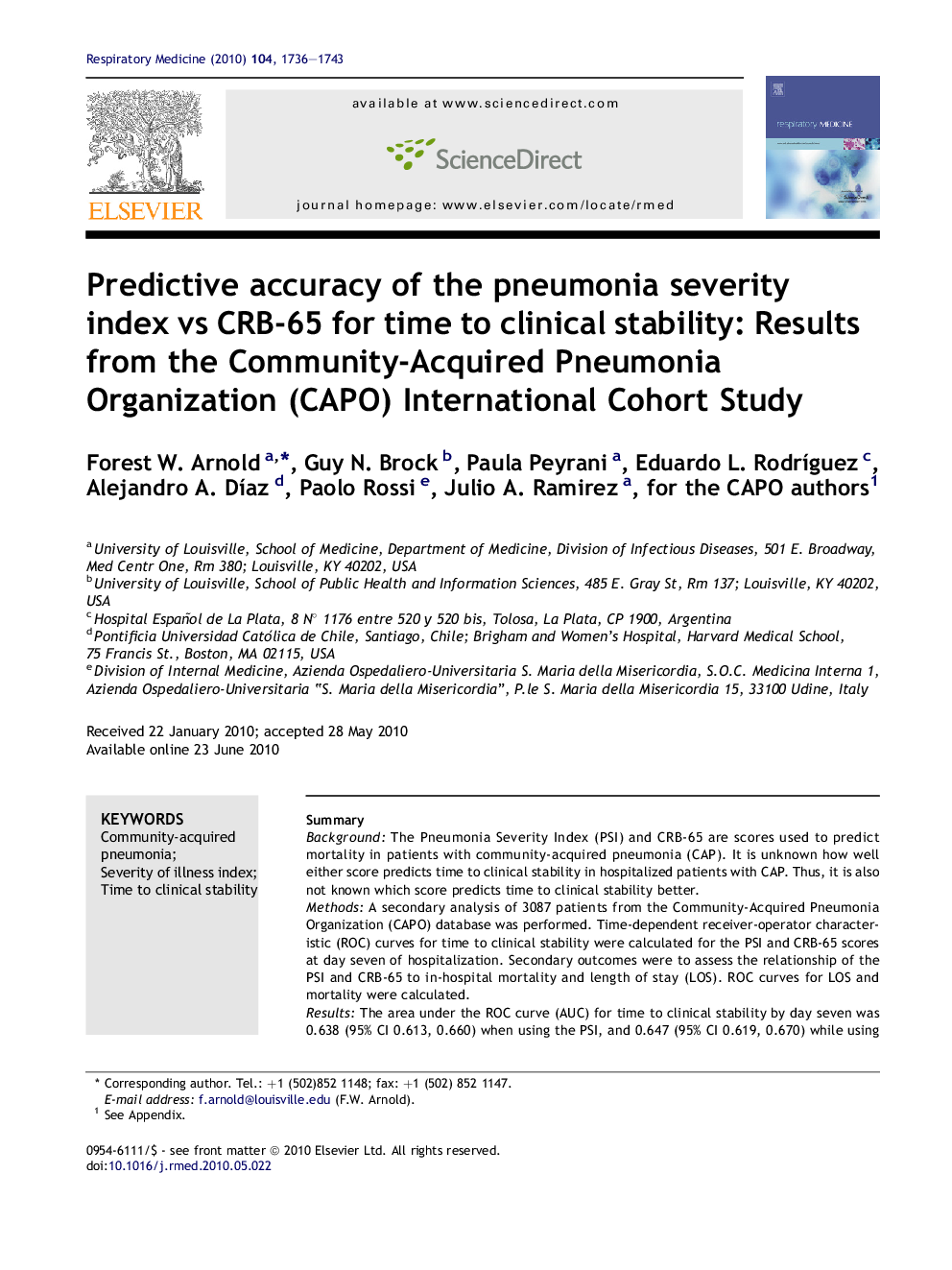| Article ID | Journal | Published Year | Pages | File Type |
|---|---|---|---|---|
| 4211793 | Respiratory Medicine | 2010 | 8 Pages |
SummaryBackgroundThe Pneumonia Severity Index (PSI) and CRB-65 are scores used to predict mortality in patients with community-acquired pneumonia (CAP). It is unknown how well either score predicts time to clinical stability in hospitalized patients with CAP. Thus, it is also not known which score predicts time to clinical stability better.MethodsA secondary analysis of 3087 patients from the Community-Acquired Pneumonia Organization (CAPO) database was performed. Time-dependent receiver-operator characteristic (ROC) curves for time to clinical stability were calculated for the PSI and CRB-65 scores at day seven of hospitalization. Secondary outcomes were to assess the relationship of the PSI and CRB-65 to in-hospital mortality and length of stay (LOS). ROC curves for LOS and mortality were calculated.ResultsThe area under the ROC curve (AUC) for time to clinical stability by day seven was 0.638 (95% CI 0.613, 0.660) when using the PSI, and 0.647 (95% CI 0.619, 0.670) while using the CRB-65. The difference in AUC values was not statistically significant (95% CI for difference of −0.03 to 0.01). However, the difference in the AUC values for discharge within 14 days (0.651 for PSI vs 0.63 for CRB-65, 95% CI for difference 0.001–0.049), and 28-day in-hospital mortality (0.738 for PSI vs 0.69 for CRB-65, 95% CI for difference 0.02–0.082) were both statistically significant.ConclusionsThis study demonstrates a moderate ability of both the PSI and CRB-65 scores to predict time to clinical stability, and found that the predictive accuracy of the PSI was equivalent to that of the CRB-65 for this outcome.
